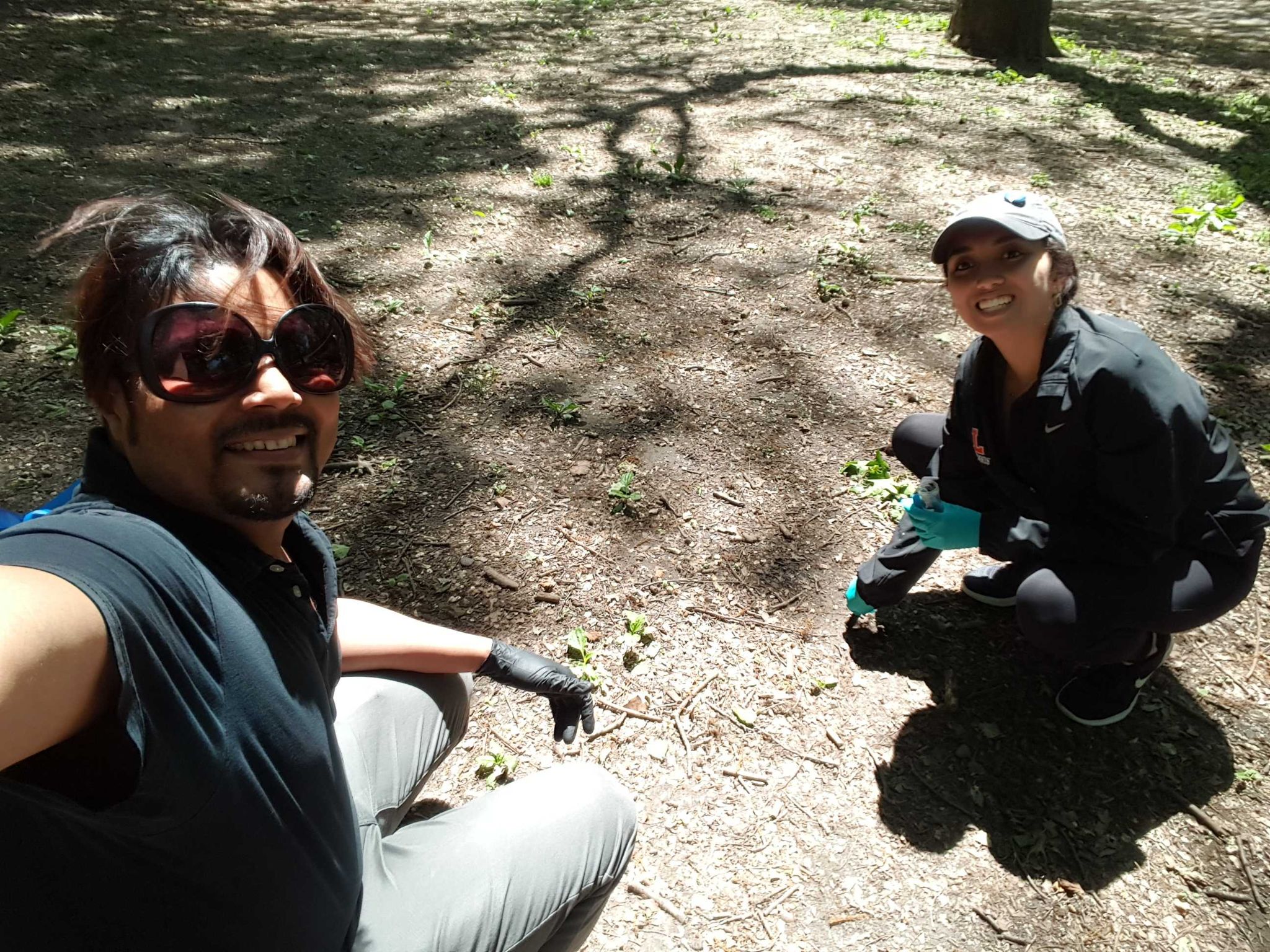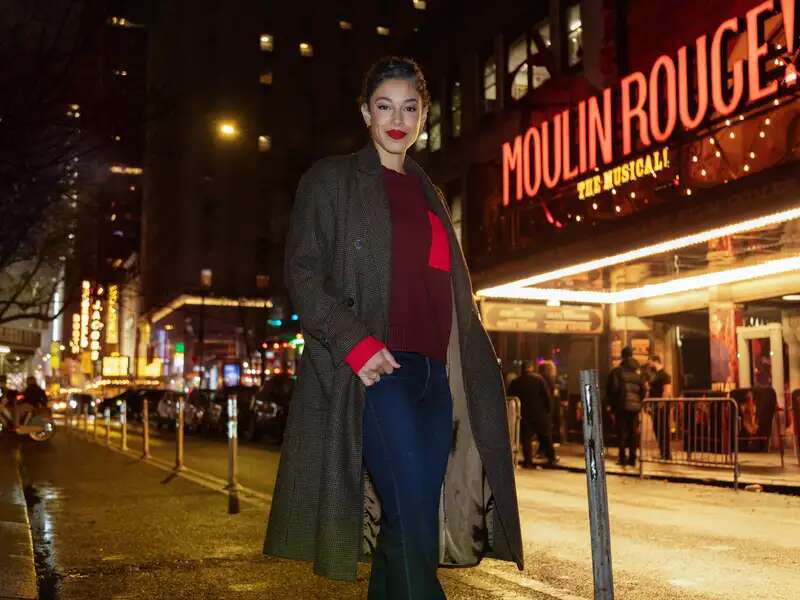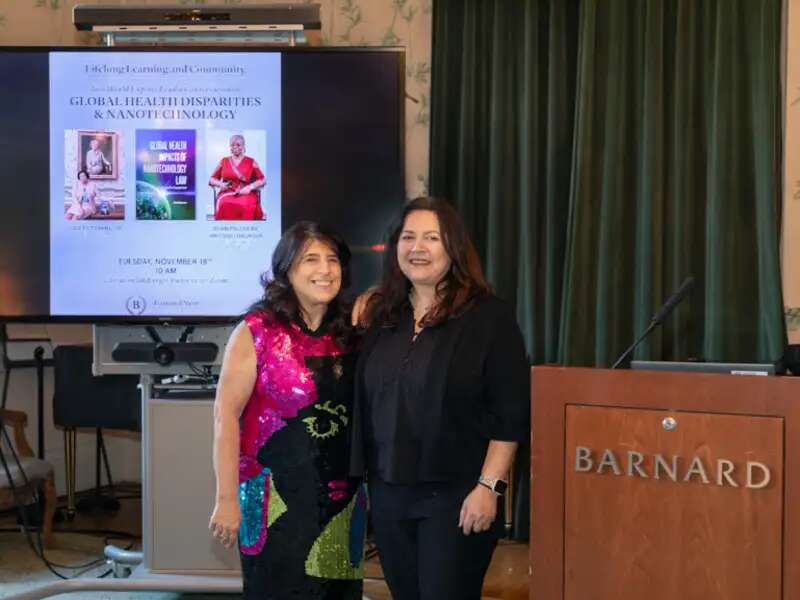Stefani Shoreibah ’21 majored in art history and minored in biology, two seemingly unrelated subjects. Shoreibah nonetheless found a way to integrate these two interests into the exciting and expanding new field of cancer art. In February, she examined how the practice could enhance research when she co-published the article “Reimagining Cancer Research With Art” in the leading science journal Nature Reviews Cancer.
Here, she explains how she discovered bioart at Barnard, where her passion for art and medicine converged.
What led you to study at Barnard?
I grew up in Lakeland, Florida, a small city between Tampa and Orlando. When it came time for me to decide where to apply to college, Barnard stood out for a number of reasons. Without a doubt, it just seemed like the best of everything: a small, super-feminist liberal arts college within this larger community that is Columbia. Barnard is right in the heart of New York City too!
Did access to Columbia University and New York City prepare you for your research career?
Yes. I am currently a premed student at Columbia’s postbacc premed program, which would not have been possible without my incredible mentors, associate research scientist Dhruba Deb, and my principal investigator, Tal Danino, at the Synthetic Biological Systems Laboratory at Columbia’s Biomedical Engineering Department. Since I first joined their lab in 2019, I have learned so much from them. They have been wonderful mentors, and I am immensely grateful to have been their student. Dr. Danino and Dhru have provided meaningful guidance in my journey and have always made learning a positive, enriching experience. Even now, as a Post-Baccalaureate Premed student at Columbia, I continue to work with them.
How did you come to pursue bioart?
The intersection of art and cancer research has long been my passion. I was a visual arts student at Harrison School for the Arts in Lakeland, where enrollment is via audition only, and while there, I founded a community service project dedicated to promoting Crohn’s disease research and awareness. I led my peers in organizing a fundraiser gallery event that invited the public to view and purchase the student artwork on display. All of the collected proceeds were donated to the Watson Clinic Foundation in Lakeland to support Crohn’s disease research.
At Barnard, I majored in art history with a biology minor. In my search for a research lab to join, I discovered Dr. Danino’s work at the Synthetic Biological Systems Laboratory, which centers around the intersection between art and cancer research. After further reading into his lab’s work, it was a no-brainer to try to join his lab. When I met with my now-mentor Dhruba, we found out we not only shared a passion for art and cancer research but also are both visual artists. We have worked on many bioart and science projects together since!
How do you see this practice improving the world?
Art and medicine, though seemingly different fields, both critique the human condition. They achieve that in different ways, but an elevated understanding of the human experience, rooted in empathy and sensitivity to another person’s story, is essential in both art and medicine. Physicians are treating a person, not just a disease, and medicine is a field about taking care of people, as simple as that may sound. I firmly believe that an approach to patient care that is heavily informed by the arts and humanities — areas that challenge us to connect with ourselves and others at a human level — is the best way to serve others in this field. Bioart bridges art and medicine together and, in doing so, reinforces the importance of a humanities approach to medicine.
What’s next for you in your research work?
In these past months, I have been studying melanoma as a researcher at the NYU Grossman School of Medicine’s Ronald O. Perelman Department of Dermatology. Having previously only studied breast and lung cancers, it has been extremely interesting to learn about melanoma. From working on this Nature Reviews Cancer paper and studying melanoma at NYU, I am aiming to delve further into studying the racial disparities that exist in melanoma treatment and care, especially because people of color are more likely to develop advanced or more aggressive cases of melanoma than Caucasians, even though melanoma is more common among Caucasians. As a woman of color in STEM, this is a mission I am particularly devoted to learning more about and combating.
—MARIE DeNOIA ARONSOHN




